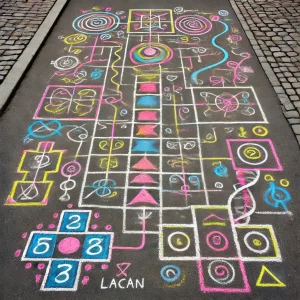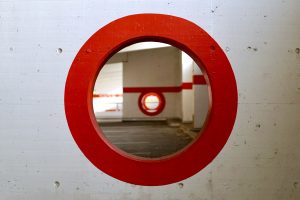Shel Silverstein’s The Missing Piece is a profound and deceptively simple tale that engages readers of all ages. On the surface, it tells the story of a circle on a quest to find its missing piece to become "whole." However, through the lens of Lacanian interpretation, the narrative opens up as a rich exploration of desire and lack, particularly when examined through Lacan’s concept of the objet petit a.
 Lacan’s Framework of Desire: The Objet Petit a
Lacan’s Framework of Desire: The Objet Petit a
Jacques Lacan, a pivotal figure in psychoanalytic thinking, introduced the idea of objet petit a as the unattainable object of desire. Unlike Freud’s notion of concrete, tangible wishes, Lacan's objet petit a refers to something more elusive. This object always seems to slip through the fingers of human satisfaction, precisely because it does not exist. It represents a gap or void, the desire that animates human pursuit but never leads to fulfillment.
For Lacan, the core of human experience is built around this fundamental lack, which is intrinsic to subjectivity. The objet petit a is not a specific object or person, but rather the idea of the lost thing, the thing that might fulfill us but never quite does.
The Missing Piece as Objet Petit a
In The Missing Piece, the protagonist, a circle missing a triangular wedge, embarks on a journey to find the perfect fit, its "missing piece." This journey represents a quintessential Lacanian narrative — the pursuit of something that promises to fulfill, to make the subject complete.
At the beginning of the story, the circle believes that finding this missing piece will restore it to wholeness. This mirrors the human fantasy that the objet petit a, once acquired, will finally bring satisfaction. The circle encounters various pieces along the way — some too large, some too small, some that fit but eventually break away. None of them seem to work. At the same time, because of the circle’s search “mission,” it rolls and stops to chat “to worm or smell the flowers,” It experiences the world at a pace where “small pleasures” and relationships are possible. This repeated failure to find the ideally fitting piece echoes Lacan’s notion that the pursuit of desire is structured around a series of missed encounters.
Just as the circle nears resolution, it finds a piece that fits perfectly. It seems as though the circle has achieved its goal and fulfilled its desire. However, when the circle becomes "complete," something unexpected happens: it starts rolling fast, “faster than it had ever rolled before, fast that it could not stop to talk to a worm, to smell a flower, too fast for a butterfly to land.” Although it can roll fast, it also loses its capacity to move freely and joyfully as it did before. Instead of leading to satisfaction, its newfound wholeness renders it less capable of movement, less dynamic, and ultimately less free.
This moment mirrors Lacan's idea that the fulfillment of desire is inherently disappointing. When we imagine that attaining the objet petit a will lead to wholeness, we fail to recognise that desire itself is what drives us. Once desire is fulfilled, it loses its function, and we become trapped, just as the circle does.
 Desire as a Constant Drive
Desire as a Constant Drive
In Lacanian theory, desire is never fully satisfied because it is not directed toward actual objects. Rather, it is a repetitive drive, continually seeking but never attaining. The circle's realisation that it was happier while incomplete suggests that the process of searching and striving—the very process of desire itself—is what brings vitality and purpose.
Silverstein brilliantly illustrates the paradox at the heart of human desire: it is not the achievement of a goal that brings meaning, but the ongoing pursuit. Once the circle becomes "whole," it becomes inert, trapped in its own static completeness. It can no longer roll around the world freely and enjoy the adventure; instead, it rolls quickly and misses everything around it. This is Lacan’s warning: to become whole would be, in a sense, to lose oneself entirely, as the self is constituted by lack.
Lack as a Constitutive Element
Lacan theorised that lack is not just an unfortunate aspect of human life, but rather what makes us human. This lack, symbolised in The Missing Piece by the circle’s missing wedge, is not something that can or should be filled. To fill it would be to destroy the very drive that makes life dynamic and meaningful. In a Lacanian sense, the circle’s true lesson is that lack is fundamental to the human condition. The circle’s journey is not about finding completion but about recognising that its search is what gives it life.
Just as Lacan argued that desire is structured around the void of the objet petit a, Silverstein’s circle discovers that its sense of fulfillment does not come from the attainment of a goal but from the perpetual act of seeking. The missing piece is not an object to be found and inserted, but rather a representation of the existential gap that animates all human experience.
 The Joy of Incompletion
The Joy of Incompletion
By the end of The Missing Piece, the circle makes a significant decision: it lets go of the piece it thought would complete it and resumes rolling along its path, incomplete but free. This ending offers a powerful lesson about Lacanian desire: wholeness is not the goal; movement and the freedom to desire are. In releasing the piece, the circle affirms its incomplete state as the true source of its joy. It does not stop it from repeating the search for its missing piece, joyfully.
Silverstein’s story, then, becomes a parable of Lacanian wisdom: it is the search, not the acquisition, that defines our lives. We are driven by a desire that can never be fully satisfied, and this drive is what keeps us alive, in motion, and engaged with the world. The missing piece is our objet petit a—the symbol of our longing, the thing we chase but never catch. And in that pursuit lies the essence of human existence.
Conclusion
Through the Lacanian lens, The Missing Piece speaks to the human condition of desire, lack, and the search for meaning. Silverstein’s tale, while seemingly childlike in its simplicity, unveils profound insights about the nature of desire, reminding us that what we seek is never truly the object itself, but the pursuit that defines our lives. In this light, the missing piece becomes not something to be mourned but something to be celebrated — the very gap that makes life worth living.
Here are some useful references that explore Lacan’s concepts of objet petit a, desire, and lack, which would enhance a deeper understanding of the Lacanian perspective applied to Shel Silverstein’s The Missing Piece:
- Shel Silverstein. The Missing Piece. Harper & Row, 1976.
- Jacques Lacan. The Seminar of Jacques Lacan: Book XI, The Four Fundamental Concepts of Psychoanalysis. Trans. Alan Sheridan. New York: Norton, 1998.
- Calum Neill. Jacques Lacan—The basics. London: Routledge, 2023
- Dylan Evans. An Introductory Dictionary of Lacanian Psychoanalysis. New York: Routledge, 1996.
- Žižek, Slavoj. Looking Awry: An Introduction to Jacques Lacan through Popular Culture. Cambridge: MIT Press, 1991.
- Ellie Ragland-Sullivan. Jacques Lacan and the Philosophy of Psychoanalysis. Chicago: University of Illinois Press, 1986.
- Shel Silverstein. The Missing Piece. Harper & Row, 1976.
